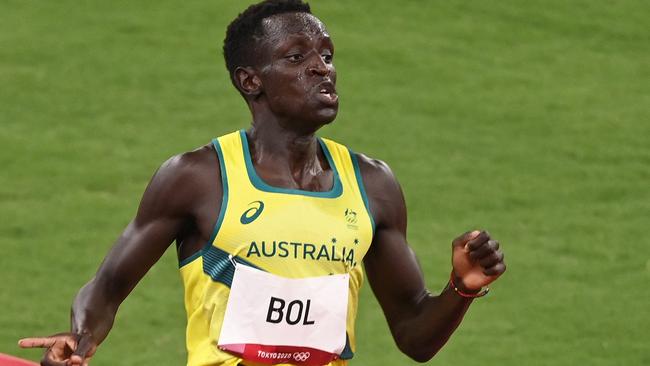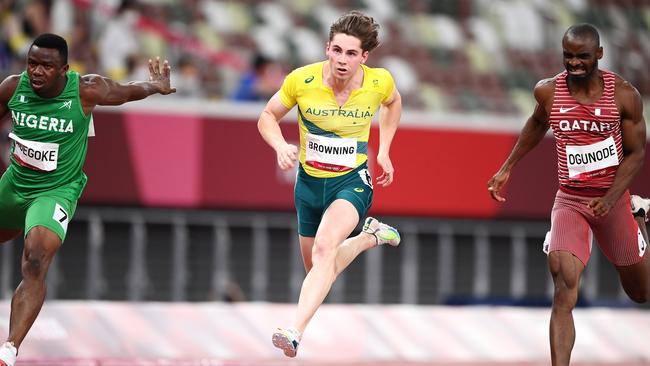
Free-to-air television will now set off on a journey similar to newspapers after the internet took over the bulk of classified advertising in employment, real estate and cars.
Last May, under the heading “Connected TV a new challenge to free-to-air television” I set out how television connected to the internet was forecast to grow at a 30 per cent plus annual rate and take substantial revenue from free-to-air television.
What I did not anticipate was that the Olympics would send Australians to connected television in unprecedented numbers. Australians now know what is there and how they can gain a better viewing experience. It will transform television for decades to come.
Our media writer Sophie Elsworth reveals how the Tokyo Olympics has been biggest digital TV event in Australian history, with viewers in the first week experiencing 2.6 billion minutes of action. The previous biggest day was a State of Origin rugby game with only 86 million minutes.

On the surface that does not seem to be a revolution because the Seven Network owns the connected TV channels that are enjoying the Olympics audience. But connected TV offers a totally different advertising experience to free-to-air television and it is now going to be embraced by advertisers in much larger numbers. In particular it will allow small and medium businesses and those in particular geographic areas to use television to promote their products and services.
Let me explain how it works.
Most Australian television sets are now able to be connected to the internet although until the Olympics the internet TV market was dominated by groups like Netflix and Stan, where viewers pay a subscription.
A connected TV network is different because usually no subscription is charged but viewers must register their year of birth and gender while the internet connection picks up the postcode.
The major channels on the connected TV network are in fact the secondary channels of Nine, Seven and Ten, plus SBS on Demand. Much of the viewing is “catch up”, where people miss programs on free-to-air TV. But SBS on Demand has a vast variety of movies and documentaries.

Connected TV offers a totally different advertising experience to free-to-air television, which is a mass marketing tool. Connected TV advertisers can select the postcodes they want to target. That means a real estate agent can look at the likely suburbs where buyers for a particular residential property will come from and then target connected TV advertising to those postcodes. And the cost is low enough to enable the TV advertisements to economically concentrate on one residential property. The local supermarket can advertise directly to the postcodes in their catchment area.
The marketers of cars can discover where the major buyers of particular cars live and again target TV advertisements to those postcodes with a large proportion of people in that audience. The pricing of connected TV is much lower because it is based on a known “completed view” of the advertisement --- the advertiser knows that in a targeted home the television set was actually broadcasting the advertisement. The viewer may, of course, have taken a coffee break while the advertisement was being shown. Small business can now use TV advertising so new markets are opened. Prior to the Olympics PricewaterhouseCoopers documented what it forecast would take place in the television market with the advent of connected TV, which it calls BVOD (Broadcast Video on Demand).
In 2020 free-to-air TV suffered significant revenue decreases across the networks but it was partially offset by the growth in connected TV which grew 38.8 per cent to $229m, albeit from a low base. From that base PwC then made a series of pre-Olympics growth forecasts.
From that $229m base, connected TV would more than double to $545m in 2022 and then jump to $900m by 2025. Free-to-air TV would stagnate around $4.2 billion so we are looking at a connected TV market share that is going to rise beyond 30 per cent. In any industry when a newcomer takes such a big share of the market the incumbent must change strategy dramatically. Of course for the free-to-air networks the task is easier because it’s their offshoot stations that are the main beneficiaries of this trend. Nevertheless the advertising price is much lower on connected TV.
As with newspapers not all the television stations will adapt to this new era and the most successful will be those which work out how to combine connected TV and free-to-air TV. For advertisers a whole new market is opening up and totally different techniques will be developed.






None of us will forget the amazing Tokyo 2020 Olympics. For Australia it was a return to the glory days. But in the years ahead Tokyo 2020 will also be remembered as the event that accelerated the demise of free-to-air television as we have known it for more than half a century.